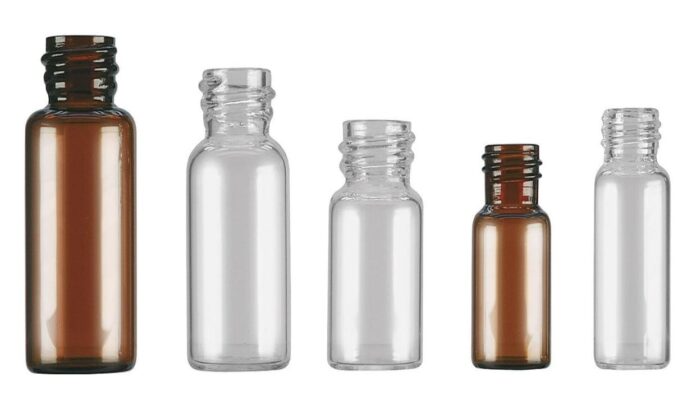Screw neck vials are a universal option with a superior seal. When this cap is fitted onto a vial, a mechanical force squeezes the septum between the vial and rim cap. There are no additional instruments required for the use of screw neck vials.
Screw thread chromatography vials are advantageous in terms of both sealing and usability. Screw thread vials have a threaded top that can be tightened by hand, unlike crimp-top vials, which require a crimping tool to ensure a tight seal. This sealing method provides a more secure and consistent seal. It eliminates the need for a crimping instrument and the associated labor-intensive and time-consuming process. Screw thread vials are also more durable than crimp-top vials, reducing the likelihood of sample loss or contamination due to fracture. You can click here to find out!
The Applications of Screw Neck Vials
On the one hand, screw neck glass vials glass bottles are resistant to acids and alkalis and do not readily react with stored substances. We prefer to use glass vessels with screw-on glass vial necks to store medicines or reagents. On the other hand, the glass container is more transparent, screw neck glass vials making it easier for us to observe the condition of the contents. For instance, some reagents cannot be used after precipitation and must be reconfigured using screw-neck glass vials. With the glass container, it is easier to observe the condition of the reagents. In general, the mouth of a glass container is divided into two types: screw mouth and grinding mouth. The screw mouth is threaded at the bottle’s mouth to improve the closure effect. Glass vials with a threaded neck Frosted at the mouth of the container are the grinding mouth. Flat to obtain a sealing effect. Therefore, what are the benefits of screw-top bottles?
The screw-top reagent container is equipped with a screw cap, a matching inner plug, a gasket, screw neck glass vials, etc., which is conducive to sealing, preventing the leakage of liquid reagents and the volatilization of solid reagents. The reagent bottle’s screw-on cap facilitates stowage and prevents the reagents from becoming wet. The screw-top reagent bottle is simple to open. It can be resealed without compromising the reagent’s quality after opening screw-neck glass vials.
Advantages of Screw Neck Vials
Screw-top bottles are typically used for items not exposed to air and require tight sealing conditions, such as water- and oxygen-absorbent screw-neck glass vials. They will interact with the water in the air upon encountering the air. Oxygen degrades chemically. A screw-top bottle is also suitable for volatile substances and screw-neck glass vials. Because the screw-top bottle is sealed with a screw thread, the sealing effect is better so that it can play a better sealing effect, screw neck glass vials; otherwise, if the sealing effect is not good, it will be discovered that the items themselves have evaporated after being stored for an extended period.
However, because screw-neck glass vial screw-top vessels are relatively tight, they cannot store some sticky substances. Once the sticky substances reach the bottle mouth and screw neck glass vials, it may be impossible to open the screw-top bottles. The appropriate glass bottle must be chosen based on the objects to be stored.












